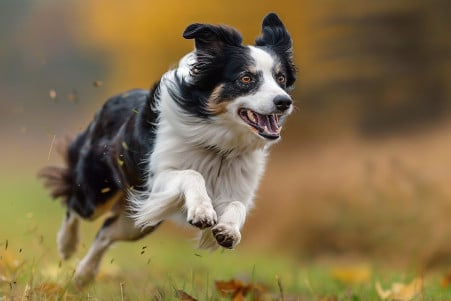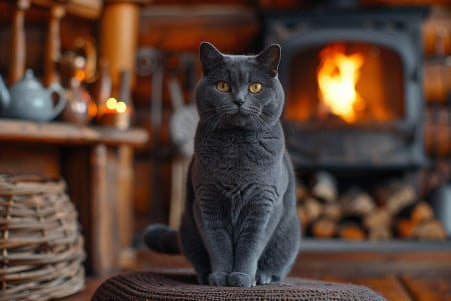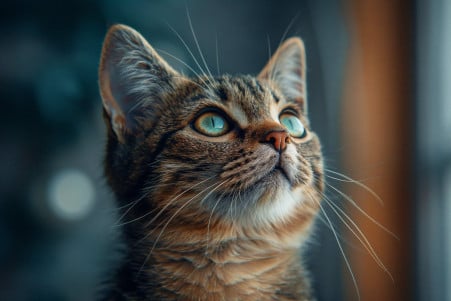How Fast Can a Cat Run? Unveiling Feline Speed Capabilities
19 February 2024 • Updated 18 February 2024

Cats are known for their speed, but how fast can they actually run? Domestic cats can run pretty fast, with top speeds clocking in at 30 miles per hour. Their strong hind legs and flexible spines help them achieve this impressive pace. That said, the average domestic cat runs at a speed of around 20 miles per hour.
This article will take a closer look at what makes domestic cats so fast, drawing on both zoological and biomechanical research to explain the physiological and anatomical factors that make it possible. It will cover studies on muscle structure, bone structure, and the impact of selective breeding on a cat’s speed.
It will also touch on the impact of the environment on a cat’s speed, offering a comprehensive look at the factors that make cats such fast and nimble animals.
How fast can a cat run?
The Science of a Cat’s Speed: Anatomy
The speed of a cat is a result of millions of years of evolution and some very specific anatomical adaptations. At the core of a cat’s speed is its muscular legs, especially the strong hind legs that give them the explosive power needed for high-speed running.
These muscles, in combination with a spine that is incredibly flexible and acts like a spring, allow cats to move forward with every step they take, according to Cats.com.
Aerodynamic body shapes help cats reduce air resistance and increase their speed. This, in combination with the fact that cats are digitigrade animals (meaning they walk on their toes), gives cats a biomechanical advantage that makes them faster, according to WIRED.
In addition, humans have selectively bred different cat breeds to enhance their speed. As a result, some breeds, like the Abyssinian and Bengal, are known for their speed, while others, like the Persian, tend to be slower. This shows that a cat’s anatomy is built for short bursts of speed, not long-distance running.
The anatomical adaptations that make cats fast are a result of their evolution from wild cats. The need to hunt and escape predators has shaped cats’ bodies and abilities over thousands of years. This evolutionary history helps explain the amazing biomechanics of cat running, where every jump and landing is evidence of their evolutionary past.
The Biomechanics of Cat Locomotion
The smooth, fast movement of a cat is the result of highly specialized biomechanics that have been honed by evolution.
Studies have delved into the biomechanics of cat locomotion and found that cats have low energy recovery during their prowl, as described in PMC.
This is in contrast to animals that have evolved to run long distances, which tend to have a pendulum-like exchange of energy that allows for energy recovery. The same study also found that although the cat’s prowl is costly in terms of energy, it’s well-suited to their predatory lifestyle, allowing them to approach prey silently and therefore making them more successful in chases.
Meanwhile, a study in Hindawi provides an in-depth look at the cat’s paw pads, which are essential for absorbing the impact of high-speed running. The pads’ elliptical shape helps them absorb more energy and contributes to the cat’s ability to withstand the forces of their fast running.
These findings are supported by a study in ScienceDirect that uses finite element analysis to show that the cat’s distal forelimb, especially the metacarpal segment, is important for stabilizing the limb during running.
In general, the ability of the joints to absorb energy during landing is critical to the cat’s speed and agility. Not only does learning about the cat’s biomechanics help explain their speed, but it also has implications for the development of athletic equipment and prosthetics that are inspired by the cat’s agility.
The Need for Speed: How Diet and Genetics Impact Feline Velocity
The amino acid profile of a cat’s diet has a direct impact on their energy levels and muscle makeup, which in turn determines how fast they can run. Cats need a diet high in protein to build the muscles that will give them the strength and endurance they need to accelerate quickly.
A 2023 paper by Hansen et al. in the Journal of Animal Science and Biotechnology notes that cats have higher dietary requirements for amino acids like arginine and taurine, which are important for muscle and cardiac function and, therefore, have a direct impact on a cat’s speed and agility.
In addition, a paper in PubMed explains that protein and energy metabolism are closely linked in domestic cats, with physical activity being one of the factors that impacts energy expenditure. This means that changes in protein and fat intake can change a cat’s energy metabolism and, in turn, their performance and speed.
A cat’s body condition also impacts how much physical activity they engage in. A study published in SAGE Journals shows that cats that are overweight are much less likely to engage in voluntary physical activity than cats that are at a healthy weight. This is likely because the extra weight puts more stress on their bodies and reduces their overall activity levels.
While genetics are important, especially in specialized breeds like cheetahs, the muscle fiber composition of domestic cats also plays a role in their speed. Fast-twitch fibers, which are built for fast, powerful movements, act as the powerhouses that enable cats to pounce and run quickly.
As a result, the complex interplay of nutrition, physiology, and genetics dictates how fast a cat can run. These factors not only determine a cat’s speed but also their ability to adapt to their environment, which in turn impacts how fast they can run.
Terrain and Elements: How the Environment Impacts a Cat’s Speed
The environment, including terrain and substrate, also plays a role in a cat’s ability to run fast. According to Fuzzy Rescue, a flat, smooth surface is best for running because rough terrain can interfere with a cat’s natural running stride and slow them down. A study in Integrative and Comparative Biology even found that substrates like sand or deep snow can be energetically costly to move through, which could slow a cat down.
Temperature and weather also play a role in a cat’s ability to run fast. Extreme temperatures, whether hot or cold, can impact a cat’s ability to run at top speeds by impacting their energy levels. In addition, wet or icy conditions can impact a cat’s ability to run fast by impacting their ability to get traction.
Cat owners can help their cats maintain their speed and agility by making changes to their environment and training them in specific ways. They can help their cats maintain their agility by playing with them using interactive toys or engaging in interval training in an enriched environment.
Making sure that cats have plenty of room to run and keeping the temperature in their home comfortable will help cats maintain their athletic ability as they get older, making it easier to transition to senior cat care and maintain their agility.
The Golden Years: Feline Speed in Aging Cats
As cats age, they experience a number of physiological and functional changes that can impact their speed and agility. According to SAGE Journals, common age-related changes in healthy cats include changes in musculoskeletal function and declines in the sensory system.
These changes can impact a cat’s ability to respond to stimuli and move quickly. The combination of musculoskeletal changes like a decrease in lean body mass and joint changes and sensory changes such as vision and hearing loss can lead to a decrease in agility.
Senior cats should receive regular veterinary check-ups to assess their health and abilities. Feline Medical Clinic recommends bi-annual wellness exams and yearly blood work to keep tabs on the health of aging cats. These visits can help cat owners better understand and manage the aging process, which often includes a decrease in voluntary physical activity in older cats.
In addition to regular vet visits, it’s important to provide aging cats with a balanced diet that meets their changing nutritional needs and exercise that supports their health and agility.
In addition, creating an environment that prioritizes the comfort and safety of aging cats, as recommended by Purina, can help ensure that they continue to be active. By doing these things, cat owners can help their aging cats make the most of their golden years and maintain as much of their beloved agility as possible.
Faster Than the Eye Can See: The Biology of Cat Speed
The domestic cat demonstrates a wide range of speeds, with an average running speed of 20 miles per hour and a top sprinting speed of up to 30 miles per hour. A complex interplay of anatomical factors, including powerful leg muscles, a highly flexible spine, and digitigrade locomotion, enable this speed.
Cats also have energy-efficient paw pads and limb joints that are optimized for speed, all of which are part of the biomechanical interplay that enables their speed.
Physiological factors, including a diet rich in amino acids, affect muscle fiber type and energy metabolism, which in turn affect a cat’s ability to sprint. Genetic factors, including selective breeding, also affect these traits, adding another layer of complexity to the cat’s speed. Meanwhile, environmental factors, including terrain and weather, also affect a cat’s speed and contribute to their overall agility.
As cats grow older, changes in the musculoskeletal and sensory systems can affect their speed. However, with proper care, cats can maintain their agility throughout their lives. The cat’s ability to run at such high speeds is a wonder of nature that demonstrates the adaptability and grace that are at the heart of the cat’s biology.


